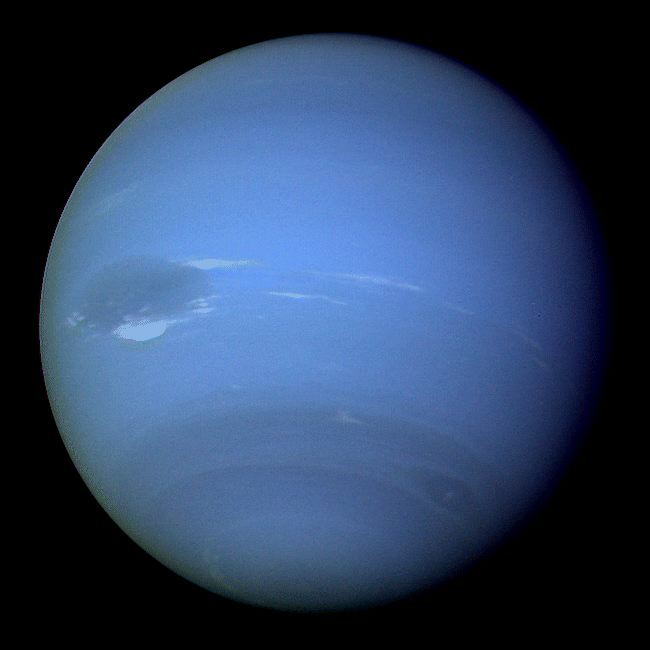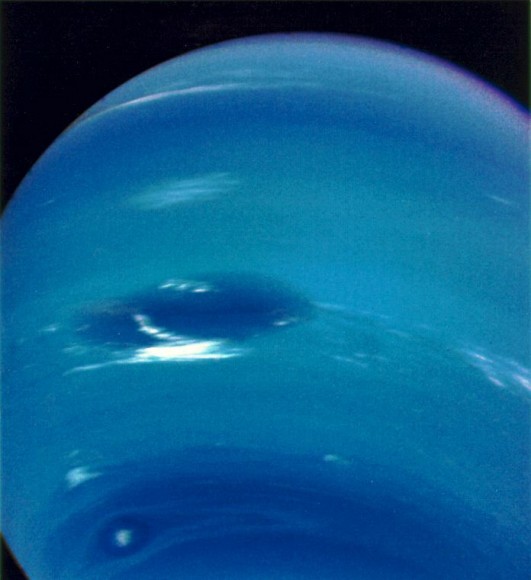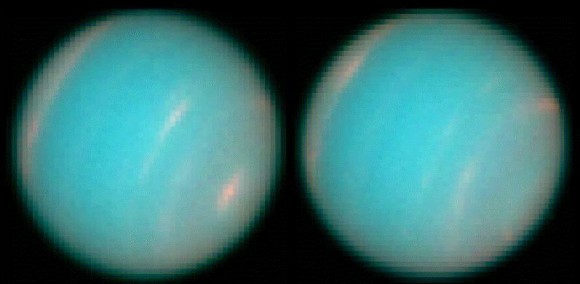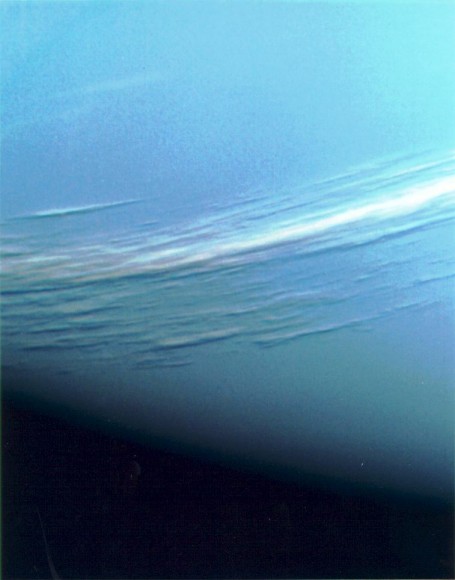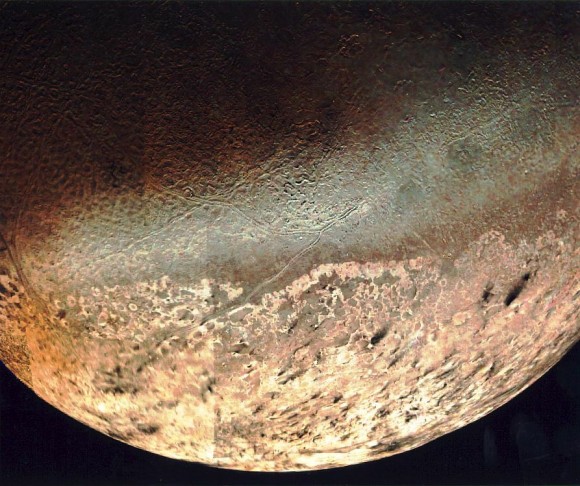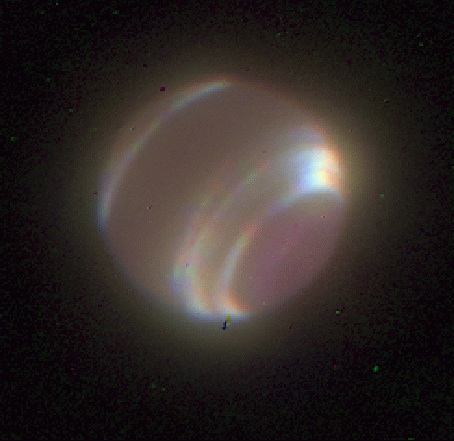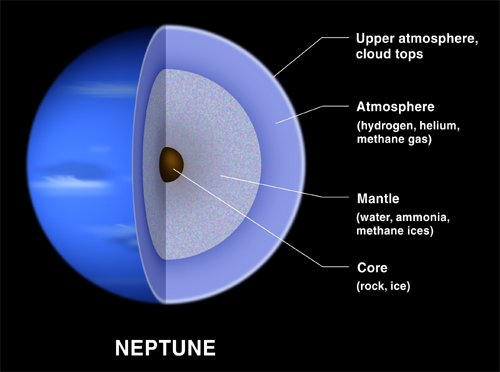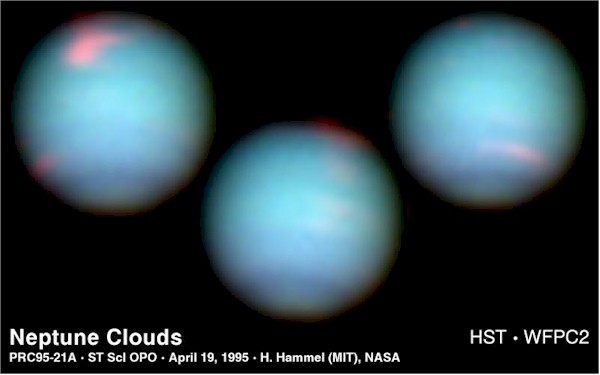[/caption]
For all the things different about Neptune from Earth, here’s something that’s remarkably similar. The tilt of Neptune’s axis is 28.32 degrees. Compare that to the Earth’s tilt of 23.5 degrees.
With such a similar axial tilt, Neptune has very similar seasonal variations to Earth. For half of its orbit around the Sun, Neptune’s northern pole is tilted towards the Earth, and then for the other half of its orbit, the southern pole faces the Sun.
One of the biggest effects of the seasonal variation on Neptune is the current “hotspot” at Neptune’s southern pole. While most of Neptune has an average temperature of around -200 Celsius, Neptune’s south pole is about 10 degrees warmer. This makes the south pole warm enough so that methane gas – frozen in the rest of Neptune’s atmosphere – can escape into space.
Once Neptune’s seasons reverse, the hotspot will shift back to Neptune’s north pole.
We have written many stories about Neptune for Universe Today. Here’s an article about how there could be oceans deep down within Neptune’s interior, and some movies of Neptune captured by Hubble.
If you’d like more information on Neptune, take a look at Hubblesite’s News Releases about Neptune, and here’s a link to NASA’s Solar System Exploration Guide to Neptune.
We have recorded an entire episode of Astronomy Cast just about Neptune. You can listen to it here, Episode 63: Neptune.

